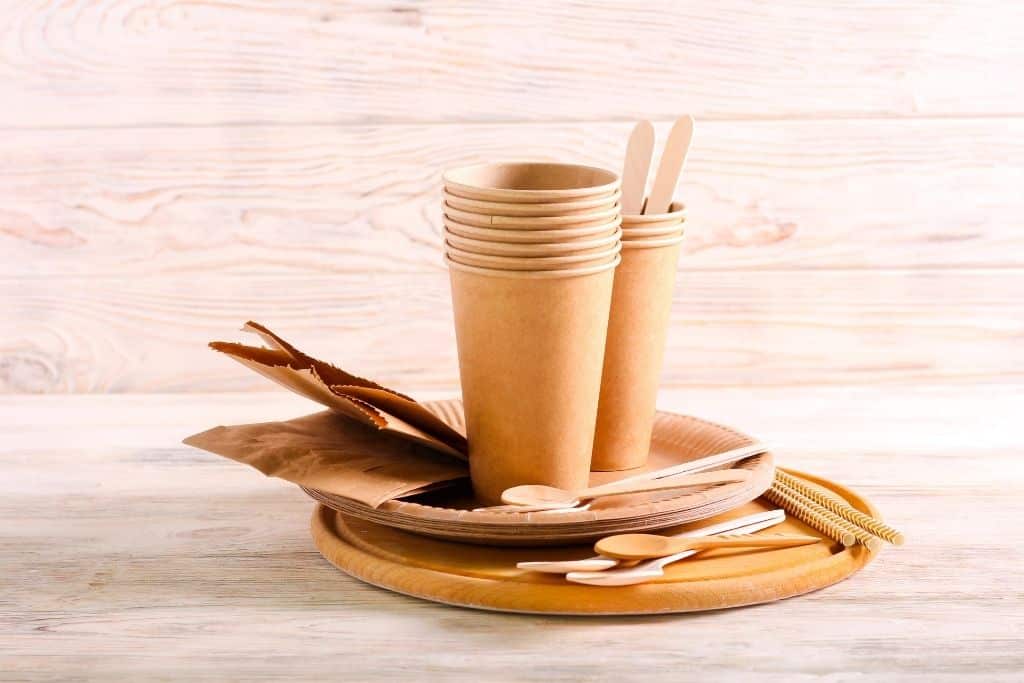Along with greenhouse gas emissions and food waste, plastics are undoubtedly the biggest polluters and environmental problems we face on the planet right now. The first step to help reduce the current rate of plastic pollution is to stop relying on single-use plastics. Every day, hundreds of millions of single-use containers, cans, trays, and cutlery are thrown away around the world. Here are five plastic alternatives for packaging you can opt for in your everyday life.
—
5 Plastic Alternatives for Packaging in Your Daily Live:
1. Compostable Plastics
Materials like bagasse – a dry fibrous material left from sugarcane after juice extraction – have become increasingly common to replace single-use plastic tableware and utensils. Unlike plastics, this alternative material is biodegradable and compostable. Bagasse are malleable and can easily be manipulated into packaging ideal for food delivery and takeaway services. And since it’s a byproduct of sugarcane production, it is also relatively more sustainable to produce. Similarly, Saltwater Brewery in the US has developed a compostable material for six-pack rings – which have been known to strangulate marine animals when they enter the ocean – made from barley and wheat remnants.
2. Cardboard Paper Water Bottles
It’s only natural to think paper and water don’t mix well and will result in a soggy mess. But a shower-friendly and water resistant paper material has been introduced in 2018 as a way to replace your shower and shampoo bottles. Hair and skincare company Seed Phytonutrients from beauty giant L’Oreal has launched bottles that are made out of recycled paper on the outside, with a recycled plastic lining on the inside. The result is a bottle with 60 percent less plastic than an average shampoo bottle. More and more companies have since joined the bandwagon in adopting paper bottles for their liquid products.
3. Plant-Based Plastics
Also known as bioplastics, plant-based plastics are typically made from cornstarch and bamboo fibres, which are then broken down into polylactic acid. They carry similar properties and sturdiness to traditional plastics, many of which are biodegradable in industrial landfills or home composts, depending on various conditions. Bioplastics could potentially contribute towards a more circular economy and lower environmental impact considering the plants used typically do not require pesticides or chemicals to grow. More bioplastics have been used to make drink bottles – much like the company Innocent, food containers and films.
You might also like: We Need Sustainable Food Packaging Now. Here’s Why
4. Hemp Plastics
There’s been great progress made in the development of alternatives for plastics. One of the newest innovations to arrive to the scene are hemp plastics. The Hemp Plastic Company is currently developing “a new breed of eco-friendly polymer which offers significant CO2 and other bio-advantages, while using renewable and sustainable resources.” Industrial hemp, which is derived from the same species of plant as cannabis (though without any of the same effects), has a lower environmental impact than traditional plastics. Thanks to its high strength and rigidity, hemp plastics are already used in the construction of cars, boats, and even musical instruments.
5. Recycled Plastics
We do our best to recycle plastics when we have to use them, and the plastics industry has been working hard to close the recycling loop. Out of the 3,147,000 tonnes of PET bottles and containers which entered the European market in 2016, some 1,880,900 tonnes were collected – an equivalent of nearly 60%. Of this, 1,773,200 tonnes was mechanically recycled. Plastics can be unavoidable when you’re looking for a sturdy material that can support heavy loads. Thankfully, many shipping materials and tools that are made from 100% recycled plastics have become more widely available, ranging from drums to spill control pallets.
You might also like: 15 Ways to Reduce Your Plastic Waste


















